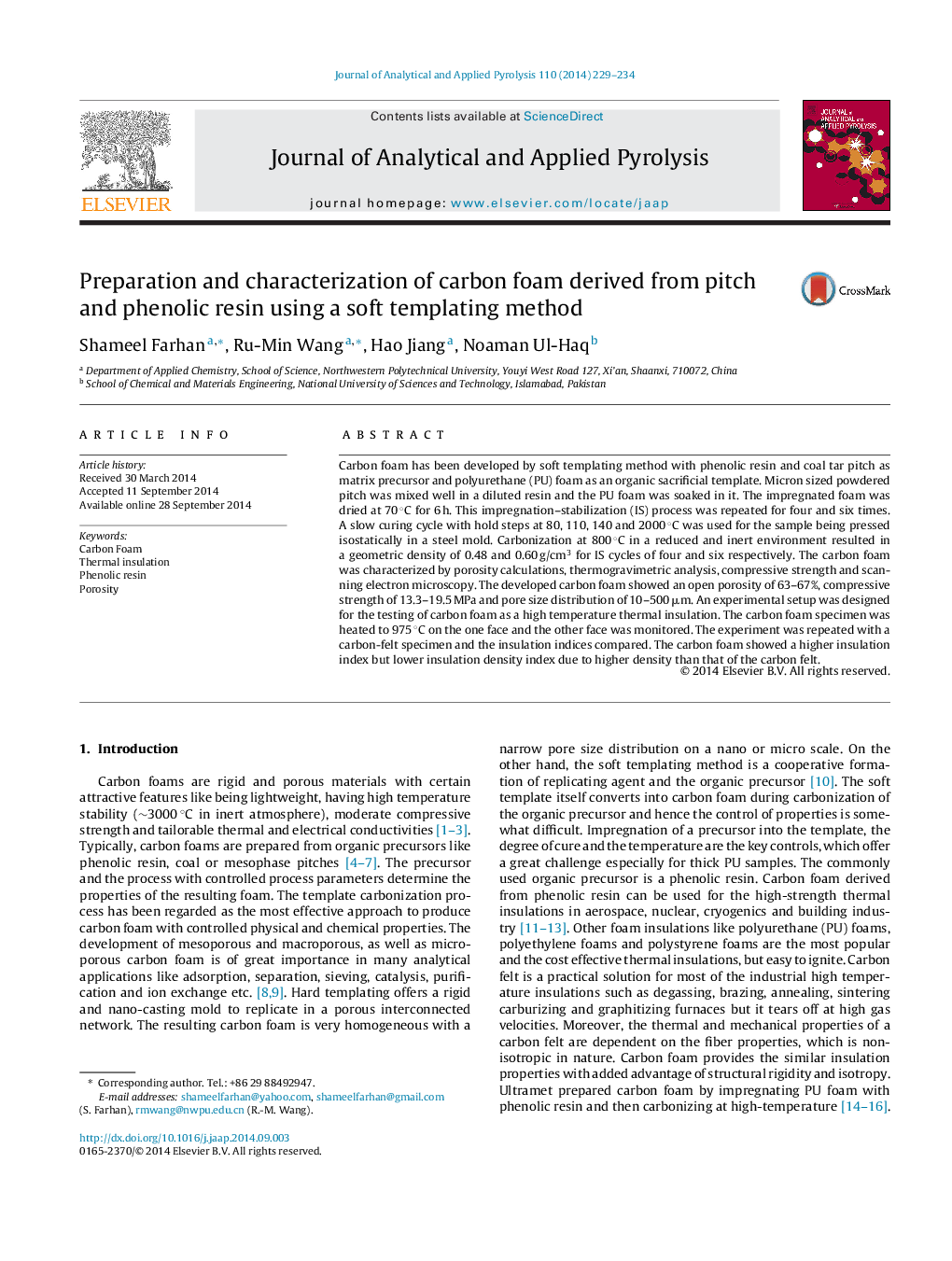| Article ID | Journal | Published Year | Pages | File Type |
|---|---|---|---|---|
| 1197309 | Journal of Analytical and Applied Pyrolysis | 2014 | 6 Pages |
•Hybrid carbon foam was prepared using resin, pitch and soft template simultaneously.•Impregnation, curing, stabilization and carbonization cycles were monitored.•Experimental set up was designed to evaluate thermal insulation performance.•Carbon foam showed better insulation index as compared with carbon felt.
Carbon foam has been developed by soft templating method with phenolic resin and coal tar pitch as matrix precursor and polyurethane (PU) foam as an organic sacrificial template. Micron sized powdered pitch was mixed well in a diluted resin and the PU foam was soaked in it. The impregnated foam was dried at 70 °C for 6 h. This impregnation–stabilization (IS) process was repeated for four and six times. A slow curing cycle with hold steps at 80, 110, 140 and 2000 °C was used for the sample being pressed isostatically in a steel mold. Carbonization at 800 °C in a reduced and inert environment resulted in a geometric density of 0.48 and 0.60 g/cm3 for IS cycles of four and six respectively. The carbon foam was characterized by porosity calculations, thermogravimetric analysis, compressive strength and scanning electron microscopy. The developed carbon foam showed an open porosity of 63–67%, compressive strength of 13.3–19.5 MPa and pore size distribution of 10–500 μm. An experimental setup was designed for the testing of carbon foam as a high temperature thermal insulation. The carbon foam specimen was heated to 975 °C on the one face and the other face was monitored. The experiment was repeated with a carbon-felt specimen and the insulation indices compared. The carbon foam showed a higher insulation index but lower insulation density index due to higher density than that of the carbon felt.
